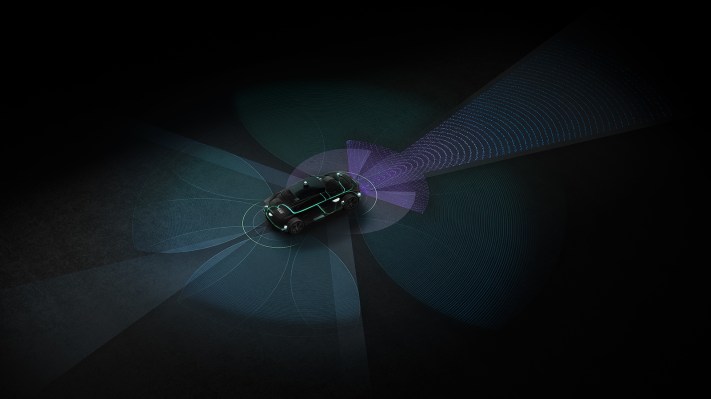Nvidia has added two electric vehicle makers to its portfolio of automotive companies adopting its Drive Hyperion platform, a compute and sensor toolkit that powers automated driving capabilities in everything from private passenger vehicles to robotaxis to autonomous trucks.
Chinese automaker BYD and American automaker Lucid Motors, two companies that offer software-defined features like intelligent parking and advanced driver assistance systems (ADAS), announced on Tuesday at Nvidia’s GTC AI developer conference that they have joined the ranks of other OEMs that rely on Nvidia’s hardware, software and compute solutions — companies like JiDU, Polestar, Li Auto, Nio, Xpeng, Volvo, Mercedes, Jaguar Land Rover and more.
Automakers are vying for the attention of would-be customers by promising features that make driving less of an action and more of a spectator sport. The problem is, while many OEMs tout themselves as having a “software-defined” approach, many of them don’t actually have the resources to pull off even low levels of autonomy.
That’s because the process of embedding a car with autonomous driving features requires millions of miles of data to train machine learning algorithms, highly advanced software that can take in sensor data and make decisions in real time and the compute capacity necessary to power it all. These capabilities fall well outside the wheelhouse of the average automaker, so OEMs are increasingly turning to companies like Intel, Qualcomm and Nvidia to develop and integrate the tools needed to keep up in today’s automotive market.
The result, at least for Nvidia, is an automotive pipeline that exceeds $11 billion in the next six years, up from $8 billion just a year ago, according to Danny Shapiro, Nvidia’s VP of Automotive. AV startups like DeepRoute.ai and WeRide also joined Nvidia’s Drive Hyperion ecosystem this week, adding to Nvidia’s reach.
BYD will build its next generation of “new energy vehicles” on Hyperion 8 architecture, which is currently in production, starting in early 2023, the company said at Nvidia’s conference on Tuesday. The company said it will just use the Drive Orin system-on-a-chip (SoC) as the central compute and AI engine for automated driving and intelligent cockpit features. Orin achieves up to 254 trillions of operations per second and is designed to handle the large number of applications and deep neural networks that run simultaneously in autonomous vehicles. BYD has not yet disclosed any further details such as whether it will use the software or sensor configurations offered by Hyperion.
At the same conference, Lucid revealed that its DreamDrive Pro ADAS is built on the Nvidia Drive platform. Every Lucid Air sedan that’s on the road today features an Nvidia SoC integrated into Lucid’s ADAS, but the automaker is still using its in-house software stack, which relies on a suite of 14 cameras, one lidar, five radars and 12 ultrasonic sensors for automated driving and intelligent cockpit features. Lucid plans to further collaborate with Nvidia on future products, but is not disclosing more details at this time.
By building with Nvidia’s hardware and architecture, these companies are able to grow their feature capacity as Nvidia scales to new generations through over-the-air software updates, according to the company.
“By starting with a programmable, high-performance compute architecture in the Lucid Air, the automaker can take advantage of the scalability of Nvidia Drive and always incorporate the latest AI technology as it expands with more models,” Nvidia said in a statement.
The next generation of Nvidia Drive: Hyperion 9
Last November, at Nvidia’s fall GTC event, founder and CEO Jensen Huang announced the Hyperion 8 was available to buy for 2024 vehicle models. On Tuesday, Huang announced the Hyperion 9 architecture for vehicles that will start to ship in 2026.
The Hyperion 9 will feature 14 cameras, nine radars, three lidars and 20 ultrasonic sensors as part of its sensor suite, up from 12 cameras, nine radars, one lidar and 12 ultrasonic sensors.
“We get a really diverse and redundant perspective of everything going on around the car,” Shapiro told TechCrunch in an interview. “This will also be powered by Atlan. Our roadmap calls for something after Orin, so this will be a higher performing SoC to handle all the additional sensor data coming in.”
